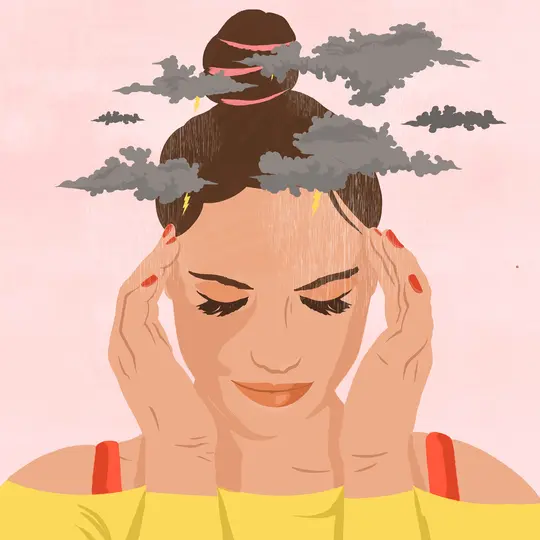1 of 4 / Headaches Overview
View All
Headaches Basics
Headaches can be complicated. Different kinds can have their own set of symptoms, causes, and need different treatments.
Headache Symptoms
Not all headaches are the same. Many headaches also cause other unwanted symptoms, including nausea and vomiting.
What Is a Secondary Headache?
For secondary headaches, another disease or condition is the cause. The headache is a symptom.
What Your Headache Location Tells You
Where your head hurts isn't a foolproof way to diagnose, but the location of your headache can be a starting point.
2 of 4 / Migraine
View All
What Is Migraine?
Migraine is a neurologic disorder that often causes a strong headache. In many people, it happens in stages.
Why Migraines Aren't 'Just' a Headache
There are key features that make migraine distinct from tension headaches and cluster headaches, which are rare.
Migraines vs. Chronic Migraines
if you have the condition known as chronic migraine, you get headaches 15 or more days a month for at least 3 months.
Mixed Tension Migraine
These headaches happen more than 15 days each month for at least 3 months. They can be migraine or tension headaches.
3 of 4 / Cluster & Tension Headaches
View All
What Are Cluster Headaches?
Cluster headaches are a series of relatively short but very painful headaches every day for weeks or months at a time.
Migraine vs. Cluster Headache
It’s possible to have both migraine and cluster headaches, but your treatment depends on which one is causing your pain.
What Are Tension Headaches?
Tension headaches are also called stress headaches, and they’re the most common type for adults.
Tension Headache vs. Migraine
The symptoms you get, how long they last, and how intense they are can be different for migraines and tension headaches.
4 of 4 / Other Types of Headaches
View All
Hemicrania Continua
This rare type of continuous headache doesn't stop. It causes pain on one side of your face or head.
What Are Hypnic Headaches?
Hypnic headache syndrome is a disorder that happens only while you’re asleep and mostly affects women over 50.
Ice Pick Headaches
Ice pick headaches feel like someone’s stabbing your face with an ice pick. They're also called stabbing headaches.
New Daily Persistent Headaches
New daily persistent headaches (NDPH) begin without warning and go on for 3 months or longer.
Suggested Reads about Migraine & Headaches
Researchers Take On Mystery of Red Wine Headaches in New Theory
Scientists have a new theory of why some people get headaches shortly after drinking red wine, even just a small glass.
Giving Yourself Grace When You're a 'Bad' Migraine Patient
Even if we know all the right things to do, we’re still human. We may eat a bunch of chocolate or pull an all-nighter. And that can trigger a migraine.
Being Intentional About Your Mental Health and Migraines
Migraines can be occasional and unpredictable and chronic and long-term. After dealing with pain for a while, it can start to impact your mental and emotional health. A renewed focus on your mental well-being may help.
Cultivate Serenity: Gardening for Migraine Relief
If you love playing in the dirt, you might be happy to hear there are herbs that may help your migraine. Check out these herbal remedies – some as old as time – that may provide relief from pain using plants.
8 million+ Physician Ratings & Reviews
Find Doctors and Dentists Near You
You can also search by physician, practice, or hospital name